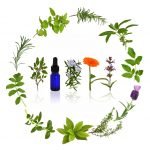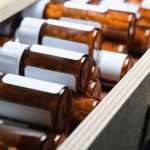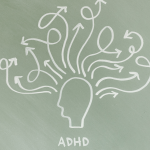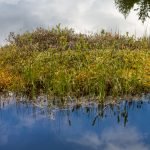Our Sun—Friend Not Foe
Mona Morstein, ND
As summer advances our attention is once again drawn to the sun. That massive orb, 109 times the size of Earth, is what allowed life to evolve on Earth and is what enables our world to grow and thrive. The sunrise delivers the optimism and hope of a new day. The sunset sprays a spirit-enlivening splash of beauty and awe across the sky, renewing us at the end of a harried working day. The Earth rotating away from the sun brings darkness, sleep, dreams, healing, and renewal. The sun is the key to the cycles of the Earth and of ourselves.
Our ancient ancestors had close connections with the sun, even worshipping it as a god at times. The sun was tied to the natural flow of nature and the passing of the seasons, and was intimately honored in its roles.
In recent times the sun has been focused on mainly as a large, cancer-causing bright spot in the sky that brings the potential for disease and death, and that should be feared and protected against. The sun has been equated mostly as the main risk for skin cancer. Skin cancer is a growing concern among Americans, with statistics showing that at least 600,000 people a year develop basal cell or squamous cell carcinomas associated with skin damage. The problem with pointing blame solely at the sun is that we mistakenly remove ourselves from any responsibility for our own health, and we forget that skin cancer has a twofold aspect: exposure (to the sun) and susceptibility (to DNA damage). After all, not everyone develops skin cancer, but everyone lives on this world covered by our sun. By simply stating that the sun is the whole problem with skin cancer and that blocking it is the only way to live, we disavow our naturopathic principles to seek all obstacles to cure, to study the person holistically, and to believe in the healing (not deadly) power of nature.
Sun-induced skin damage is oxidative damage based mainly on ultraviolet radiation. There are three types of UV light that the sun produces, UVA, UVB, and UVC. UVC does not affect us much as only a little of it penetrates our atmospheric barrier of ozone, but UVA and UVB do. UVB is the wavelength most associated with sunburning, and causes 90% of basal and squamous cell carcinomas. UVA is more associated with causing a nice tan, but can also cause damage to the skin. Sunscreens are more effective at blocking the shorter UVB waves than the longer UVA.
Sunscreens are rated with an SPF factor—sun protection factor. This only measures UVB protection, not UVA. SPF ratings go from 2 to 50. At an SPF of 15, about 95% of UVB is screened out; at SPF 30, 98% is screened. Unfortunately at SPFs greater than 8, vitamin D is prevented from being formed in us, as the sunlight that initiates its creation is too well blocked. Vitamin D is an incredibly important nutrient that is associated with preventing osteoporosis, and it is known to be anticarcinogenic (it’s ironic that we use sunscreens to prevent cancer, which then block the formation of a very anticarcinogenic nutrient!). It also helps maintain insulin sensitivity, which reduces our risk of diabetes, and is now further associated with preventing multiple sclerosis and other autoimmune diseases. Studies have shown it can reduce bone pain and muscle ache, and can regulate the menstrual cycles in PCOS patients. More and more research is focusing on the innumerable benefits of vitamin D. Some statistics say that due to blocking vitamin D formation by sunscreens, long shirts, and hats, there are actually 20,000 more cancers a year.
Another problem with sunscreens is that some of them contain PABA or PABA esters (padimate O, padimate A). PABA is one of the strongest chemicals that block both UVB and vitamin D absorption. PABA is also associated with being absorbed through the skin and having estrogen-like procarcinogenic effects in people. Studies from the Department of Biochemistry in Oxford showed that PABA, when exposed to light, is a mutagen that damages DNA directly. Mutagenic activity can cause cancerous changes. The conclusion of the study was that while PABA may prevent sunburn, it may very well also increase sunlight-induced cancers.
Benzophenone, oxybenzone, and dioxybenzone protect against UVA and UVB—they are highly allergenic chemicals and oftentimes irritating to skin.
Oxidative damage occurs in us all the time, with our basic metabolism initiating free radical formation. Free radicals cause oxidative damage throughout our body. That is why eating antioxidant-rich fruits and vegetables and taking antioxidant supplements is so important. Antioxidants stop oxidative damage from occurring, and the main point I wish to make here is that such nutrients prevent the same damage that the sun can cause. Numerous studies have shown that taking doses of carotenoids, vitamin C, and vitamin E will prevent sun-induced oxidative damage in people. This makes perfect sense, as we recommend people take the same antioxidants to deal with other oxidative radicals in our body, such as vitamin E to prevent the lipid peroxidation of LDL cholesterol, from which reduces the risk of atherosclerosis development. Studies on humans done in Paris and Germany showed that by giving a simple antioxidant supplement there was significantly reduced epidermal damage from UV radiation.
What we tend to see in Americans is that during the summer, people eat lots of junk food, pop, alcohol, and grilled meats—all can produce oxidative reactions in us. Now, Americans tend to consume these during the winter too, except the home grilling of meats is not common then. Grilled meats cause the creation of heterocyclic amines, which are carcinogenic. However, the summer adds in intense sun exposure. So, what we have is a disease-causing combination of people not taking antioxidants, eating foods and drinking beverages that themselves produce free radicals in our bodies and not eating enough fruits and vegetables, and having sun exposure. Why should Americans place all blame on the sun if they wind up with a basal cell carcinoma? What our society and our dermatologists tend to do is remove personal self-responsibility for the breakdown in the skin’s health and simply blame the sun. Common sense and research now supports that if people ate correctly, did not increase oxidative damage by their food and drink, and took antioxidants, they would have a significantly reduced risk of skin cancer even with sun exposure.
Bodies can also stay healthier if they are not overweight, if they eat healthily (and organically), exercise regularly, get restive sleep, reduce their exposure to environmental toxins, avoid detrimental lifestyle habits, avoid addictions, handle stress in some positive way such as prayer, meditation, yoga, or creative activities, and feel good about themselves, their job, and the progress of their lives.
I am not in any way suggesting people stop using hats and sunscreens. Common sense is common sense, and keeping the intensity of the Arizona desert sun off one’s head is smart and reasonable. And everyone needs to understand his or her own skin sensitivity to the sun and live accordingly with or without sunscreens. But fearing the sun and instilling that fear into our children, removing them from the flow and trust in nature, seems—as science has explained—unnecessary. After reading this short article, I hope folks will see a bigger picture of skin health and will partake of common sense in the desert while also analyzing their own life, diet, and supplement regimens to see if they can find ways to improve those categories and protect themselves from skin damage without simply pointing fingers into the sky. Thus they will not be so afraid of the light-giving sun above us that blesses the Earth with life.
Personal note: I have not used any sunscreen for 15 years (except on my lips), and have never burned in all that time.
References
Annu Rev Nutr 24:173-200, 2004.
Arch Dermatol 124(12):1802-4, 1988.
FEBS Lett 324(3):309-13, 1993.
Iowa Statewide Poison Control Center: www.iowapoison.com/mnpoison/pdfs/Sun_Danger.pdf (accessed Mar 30, 2005).
J Clin Endocrinol Metab 64(6):1165-8, 1987.
J Invest Dermatol 124(2):304-7, 2005.
Photochem Photobiol Sci3(8):749-52, 2004. Epub 2004 Apr 1.
Photodermatol Photoimmunol Photomed 19(4):182-9, 2003.
Dr. Mona Morstein is a naturopathic physician in Mesa, Arizona. She is chair of nutrition at Southwest College of Naturopathic Medicine, teaches gastroenterology, and is a clinical supervisor in the outpatient clinic of the medical school. She specializes in women’s health, diabetes and weight loss, gastroenterology, asthma, hypertension, arthritis, and headaches.










